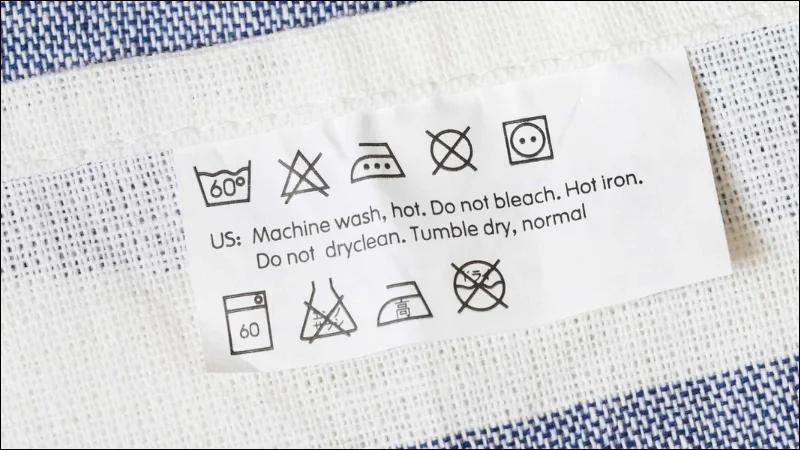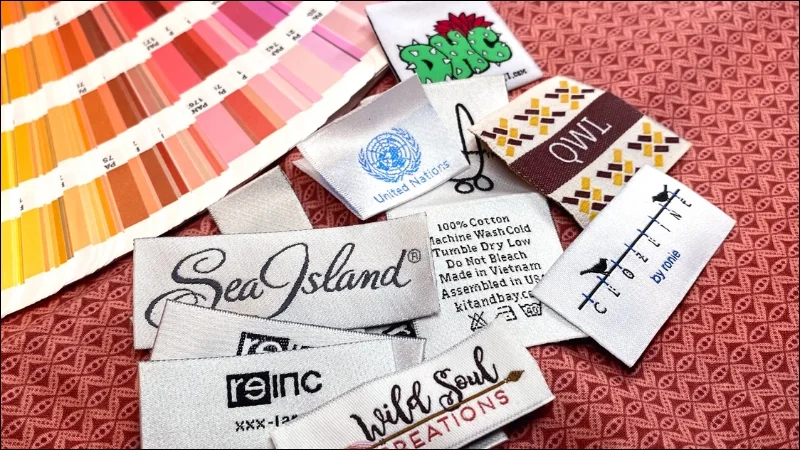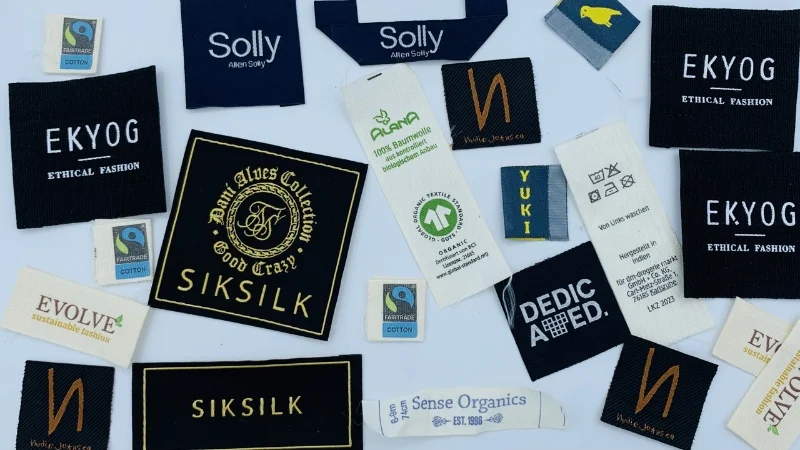US Clothing Content Labels: FTC Rules And Compliance
Navigating the world of apparel regulations can feel complex, especially for small clothing businesses and new designers aiming for the US market. A fundamental piece of this puzzle is the content label, a small tag carrying significant legal weight.
This label communicates essential information mandated by FTC rules, including fiber content, country of origin, and manufacturer identification. Overlooking these legal requirements isn’t just a minor slip-up; failure to comply can lead to issues with the Federal Trade Commission (FTC), disrupt consumer transparency, and erode brand reputation.
This guide offers clear, actionable information drawn from practical experience, defining what a content label is, detailing US requirements, and providing guidance for implementation, helping clothing businesses meet their obligations and build trust.
1. Defining the Content Label in Apparel: More Than Just a Tag
First, let’s clarify: when discussing content labels in the context of apparel, this refers specifically to the physical garment tag attached to clothing and textiles. This differs significantly from how the term might be used in digital accessibility or online advertising.
A content label for clothing is a legally mandated tag affixed to the garment that details specific product information. Its primary role is not for branding or providing washing instructions (though these are often combined onto the same physical tag), but for mandatory disclosure. The core purpose is to provide crucial consumer information regarding the material identification and origin, ensuring transparency for both the buyer and regulatory bodies.

2. Why Content Labels Are Non-Negotiable for Your Clothing Line
Understanding and implementing correct content labeling is crucial for any serious apparel business operating in or selling to the US. Here’s why:
- Legal compliance: This is not optional. Content labels are required by US federal law, specifically the Textile Fiber Products Identification Act, enforced by the FTC. Non-compliance can result in significant consequences, including fines, mandatory recalls, and seizure of goods. Proper compliance labeling protects your business.
- Consumer transparency and trust: Accurate material composition information allows consumers to make informed decisions. Knowing the exact fiber content (e.g., cotton, polyester) helps customers with allergies or specific preferences (like seeking natural fibers) and builds confidence in your brand. Transparency fosters trust.
- Informing proper garment care: The specified fiber content directly informs how a garment should be cared for. While detailed washing instructions belong on the care label (governed by the Care Labeling Rule), knowing the materials is the first step to proper maintenance, helping customers preserve the garment’s quality and lifespan.
- Brand reputation & professionalism: Correctly labeling your products signals that you are a professional, responsible business that respects regulations and values its customers. Consistent, accurate labeling enhances your brand identity and overall brand reputation.
2.1 Fiber Content: Accuracy is Key
The fiber content section is a critical component of the content label. Accuracy here is paramount. The FTC mandates the following:
- List all fibers constituting more than 5% of the total fiber weight.
- List them in descending order by weight percentage.
- Use the generic fiber names recognized by the FTC. Capitalization isn’t strictly required, but consistency is good practice.
- The percentages must add up to 100% (unless specific exceptions apply).
For example:
- “60% cotton, 40% polyester”
- “95% rayon, 5% spandex”
If a garment is composed entirely of one fiber (allowing for a small tolerance), you can state “100% cotton” or “All cotton”. Fibers making up less than 5% should generally be listed as “Other fiber(s)”, unless they have a specific functional significance (like spandex for stretch).
Decorative elements like trim or embroidery might be excluded using phrasing like “Exclusive of Decoration,” provided they meet specific criteria outlined in the Textile Fiber Products Identification Act. Certain materials, like wool, have additional specific rules under regulations like the Wool Products Labeling Act. Accurate disclosure of material composition using correct generic fiber names and percentages is essential.
| Generic Fiber Name | Brief Description/Characteristic |
|---|---|
| Cotton | Natural fiber, breathable, absorbent |
| Polyester | Synthetic fiber, durable, wrinkle-resistant |
| Rayon | Semi-synthetic fiber, soft, absorbent |
| Spandex (elastane) | Synthetic fiber, known for stretch |
| Nylon | Synthetic fiber, strong, resilient |
| Wool | Natural animal fiber, warm, insulating |
| Silk | Natural protein fiber, smooth, lustrous |
| Linen | Natural plant fiber, strong, breathable |
2.2 Country of Origin: Transparency in Manufacturing
Another mandatory element is the country of origin. FTC requirements state that the label must clearly indicate the country where the garment was processed or manufactured – essentially, where the substantial transformation occurred (manufacturing location).
This applies whether the goods are imported or domestically produced (Made in USA label).
- For items made entirely outside the USA, use phrases like “Made in [Country Name]” (e.g., “Made in Vietnam”).
- For items made entirely within the USA using domestic materials, use “Made in USA.”
- If a garment is significantly processed in the USA but uses imported fabric or components, phrasing like “Made in USA of Imported Fabric” or similar disclosures might be required, depending on the specifics of production.
- Simply stating “imported” is generally acceptable for goods made entirely outside the US.
The country of origin declaration must be conspicuous and legible on the textile product.

2.3 Manufacturer or Dealer Identification: Ensuring Traceability
The content label must also identify the business responsible for the garment. The purpose is to pinpoint the US-based responsible party, which could be the manufacturer, importer, wholesaler, or retailer. This ensures accountability and supply chain transparency.
There are two primary ways to meet this FTC requirement:
- RN Number (Registered Identification Number): This is the most common method. The RN Number is a unique identifier issued by the FTC to businesses residing in the USA that are engaged in the manufacture, import, distribution, or sale of textile, wool, or fur products. You can apply for one or look up existing numbers on the FTC website.
- Full business name: Alternatively, you can use the full registered name of your company as filed. Using the RN Number is often preferred as provides manufacturer identification without revealing the full company name directly on the label if desired.
Whichever method is chosen, it ensures that the entity responsible for the garment sold in the USA can be traced.
3. Content Label vs. Care Label: Related but Distinct Requirements
Businesses often ask about the difference between a content label and a care label. While frequently combined onto a single physical sew-in label for practicality, they fulfill distinct legal requirements mandated by the FTC.
The care label focuses specifically on providing washing instructions and guidance for drying, ironing, bleaching, and dry cleaning. These instructions often use standardized laundry symbols and text, governed by the FTC’s Care Labeling Rule. The purpose is to help consumers care for the garment properly to maintain its appearance and fit.
The content label, as detailed above, focuses on fiber content, country of origin, and manufacturer identification, governed primarily by the Textile Fiber Products Identification Act. Its purpose is disclosure about the garment’s makeup and origin.
Crucially, for most apparel sold in the USA, both sets of information are required. Therefore, if you combine them onto one label (a common practice for garment labeling), that single label must contain all the necessary information mandated by both the Textile Act and the Care Labeling Rule to be fully compliant.
4. Practical Considerations for Your Apparel Business
Beyond the core legal requirements, consider these practical aspects when implementing content labels:
- Label placement: Labels must be easily accessible for consumers to find before purchase. Common locations include the center back neck or a side seam. Critically, the label must be attached securely enough to remain legible throughout the garment’s expected useful life.
- Label durability: The label material and the printing or weaving must withstand repeated home laundering cycles appropriate for the garment. A label that fades, frays, or becomes unreadable quickly fails to meet the durability requirement.
- Choosing label types: Options vary:
- Woven sew-in labels: Highly durable, classic look, excellent for brand identity, but potentially less soft.
- Printed satin sew-in labels: Softer feel against the skin, allows for fine detail, good balance of durability and comfort.
- Tagless heat transfers (printed labels): Offer maximum comfort as there’s no physical tag, directly printed onto the garment. Durability can vary based on application quality. The best choice depends on your garment type, target customer, and desired brand identity.
- Sourcing compliant labels: Work with reputable label manufacturers who understand FTC Labeling Rules and textile labeling requirements for the US market. Don’t hesitate to ask potential suppliers about their expertise in compliance labeling. Getting this right from the source saves potential headaches later. This is particularly important for a small business where resources might be limited.
- Common mistakes: Avoid frequent errors like inaccurate fiber percentages, completely omitting the country of origin, using a non-registered business name instead of an RN Number or the full legal name, or using print that quickly becomes illegible.
Read more: Woven vs Printed Size Labels: Which is Best for Your Brand?

5. Related Questions
5.1 Do I need both a content label and a care label?
Yes, for most apparel items sold in the US, you generally need to provide the information required for both. The FTC mandates fiber content, origin, and manufacturer ID (covered by the content label requirements under the Textile Act) and care instructions (covered by the care label requirements under the Care Labeling Rule). While they address different regulations, both sets of information must be present and accurate, although they can often appear on the same physical label.
5.2 Where can I find my RN Number or apply for one?
The official source for RN Numbers is the Federal Trade Commission (FTC). You should visit the FTC’s official website. Search for terms like “RN Database” or “Registered Identification Number”. The website provides an online system where you can look up existing RN Numbers and apply for a new one if your business is eligible (typically requires being based in the US and involved in textile product manufacturing or handling).
5.3 What happens if my content labels are wrong?
Incorrect or missing content labels constitute non-compliance with federal regulations. Potential consequences enforced by the FTC can include warning letters, substantial fines, orders requiring corrective actions (such as re-labeling entire product batches or conducting recalls), and even seizure of non-compliant goods. Beyond legal penalties, inaccurate labeling significantly damages brand reputation and erodes consumer trust.
5.4 Does the content label need to be in English?
Yes. For products sold in the USA, the mandatory information on the content label (fiber content, country of origin, manufacturer/dealer identification) must be provided in English, according to FTC regulations. You may include the information in other languages in addition to English, but the English version is required and cannot be substituted.
Read more:
Mastering content labels is more than just a regulatory hurdle; it is fundamental for building a successful and trustworthy apparel brand in the USA. Accurate garment labeling ensures legal compliance with FTC Labeling Rules, provides essential consumer information regarding fiber content, country of origin, and manufacturer ID, and ultimately fosters brand trust within the competitive apparel industry. Paying close attention to these details demonstrates professionalism and respect for your customers.






















